Disclosure: This article contains affiliate links. We may earn a commission from purchases at no extra cost to you, which helps our travel content.
As an anthropologist who studies mountain communities adapting to climate change, my research frequently takes me to the world's most spectacular highland regions. Peru's Sacred Valley of the Incas, nestled between Cusco and Machu Picchu, represents one of humanity's most remarkable adaptations to mountainous terrain. During my recent two-week expedition studying agricultural resilience practices, I had the opportunity to experience the full spectrum of accommodation options in this breathtaking landscape. From carbon-neutral eco-lodges employing indigenous sustainability practices to meticulously restored colonial haciendas offering sumptuous luxury, the Sacred Valley provides couples seeking a meaningful getaway with extraordinary choices that honor both the region's cultural heritage and natural environment. This curated guide reflects my academic interest in sustainable tourism's impact on local communities while satisfying my personal appreciation for thoughtful hospitality.
Understanding the Sacred Valley's Microclimates
Before selecting accommodations in the Sacred Valley, it's essential to understand the region's diverse microclimates and their influence on your experience. The valley follows the Urubamba River's sinuous path, with elevations ranging from 2,800 meters in Pisac to 2,400 meters in Ollantaytambo. This elevation gradient creates distinct temperature zones and precipitation patterns that vary considerably throughout the year.
During my summer research visits (June-August), I've documented daily temperature fluctuations of up to 20°C—from near-freezing mornings to pleasantly warm afternoons. This meteorological phenomenon, common in tropical mountain regions, necessitates thoughtful accommodation selection. Properties at higher elevations offer spectacular panoramic views but experience colder evenings, while those nestled deeper in the valley provide warmer nights but may have more limited vistas.
The valley's orientation also creates fascinating microclimates between the north and south-facing slopes. North-facing accommodations receive more consistent sunlight, making them ideal for those sensitive to altitude, while south-facing properties often feature more dramatic cloud formations and atmospheric lighting conditions prized by photographers.
I've found that packing a quality insulated jacket is essential regardless of where you stay, as evening temperatures drop quickly once the sun retreats behind the Andean peaks.
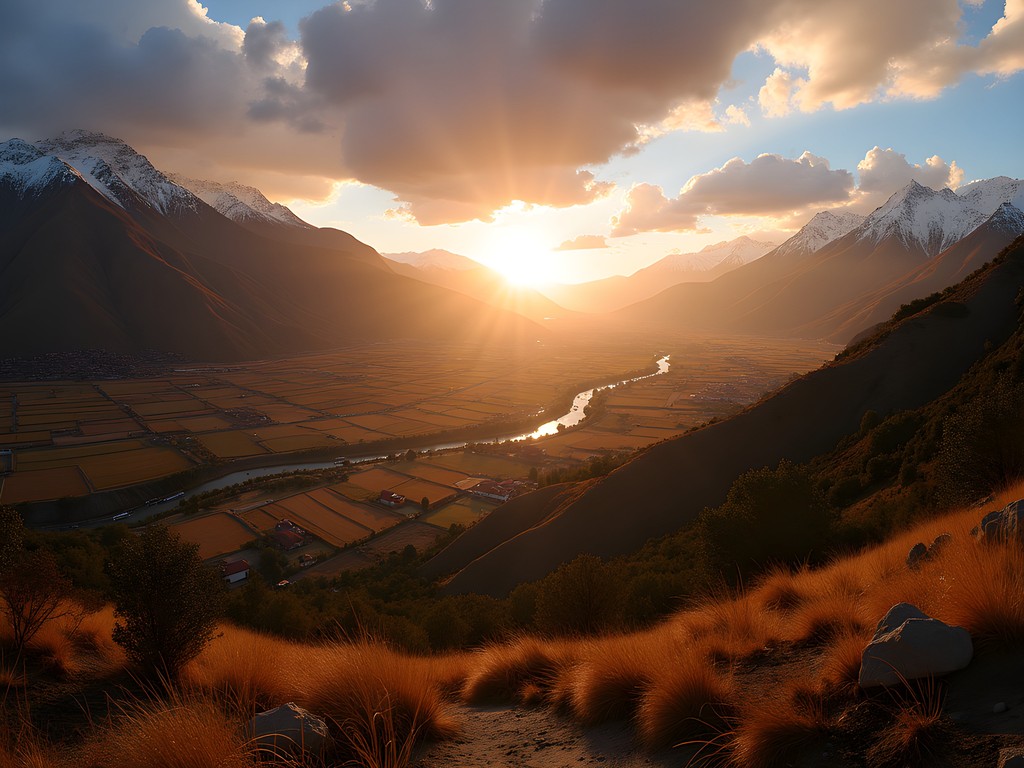
💡 Pro Tips
- Properties above 3,000 meters elevation may require altitude acclimatization before check-in
- Request rooms with southern exposure for dramatic mountain views or northern exposure for more sunlight and warmth
- Even luxury properties may experience occasional power fluctuations; pack a small flashlight
Luxury Eco-Lodges: Sustainability Meets Sophistication
My academic focus on environmental adaptation has made me particularly appreciative of properties that successfully balance luxury with genuine ecological commitment. Several exceptional eco-lodges in the Sacred Valley have developed sophisticated systems that honor pre-Columbian agricultural wisdom while incorporating contemporary sustainability innovations.
During my research stay at Inkaterra Hacienda Urubamba, I was impressed by their implementation of traditional Andean farming techniques across their 10-acre carbon-negative microfarm. The property's architectural design draws heavily from indigenous building methodologies, utilizing local materials and passive solar heating to minimize energy consumption while maximizing comfort. Their farm-to-table restaurant sources over 80% of ingredients from their organic gardens, creating a closed-loop system that significantly reduces food miles.
Another standout property is Explora Valle Sagrado, whose conservation initiatives extend beyond their immediate grounds to support broader watershed protection efforts. Their comprehensive water management system—which includes rainwater harvesting, greywater recycling, and blackwater treatment—represents one of the most advanced I've documented in mountain tourism operations globally. The property's all-inclusive program includes guided excursions led by anthropologists and environmental scientists who contextualize the region's ecological challenges within their historical framework.
For documenting these experiences, I relied on my weatherproof notebook, which proved invaluable during unexpected afternoon showers while exploring the properties' grounds and sustainability initiatives.
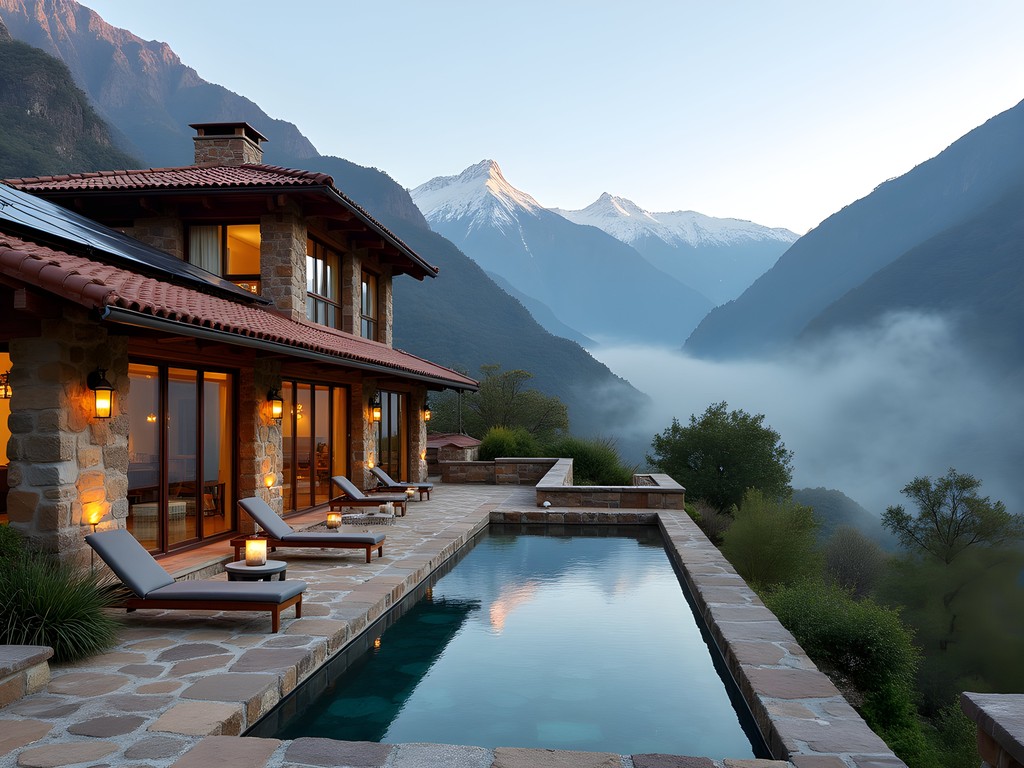
💡 Pro Tips
- Request a sustainability tour upon arrival to understand each property's environmental initiatives
- Many eco-lodges offer complimentary refillable water bottles; bring a collapsible water bottle as backup
- Book rooms facing agricultural areas to observe traditional farming practices in action
Historic Haciendas: Colonial Legacy Reimagined
The Sacred Valley's colonial history has left a legacy of magnificent haciendas that have been thoughtfully repurposed as luxury accommodations. These properties offer couples a unique opportunity to experience Peru's complex cultural layering—where Spanish colonial elements overlay indigenous Andean foundations, creating spaces of extraordinary architectural and historical significance.
Belmond Hotel Rio Sagrado, where I conducted a series of interviews with local artisans for my research on traditional textile production, exemplifies this harmonious integration. The property occupies a former colonial estate that has been meticulously restored with an emphasis on preserving original architectural elements while incorporating contemporary luxury amenities. The hacienda's extensive gardens feature pre-Columbian irrigation systems still functioning after centuries, demonstrating the engineering prowess of ancient Andean civilizations.
Sol y Luna, another exceptional hacienda-style property, has developed a remarkable cultural preservation program that supports local artistic traditions. During my stay, I observed their in-house workshops where guests can learn traditional weaving techniques directly from master artisans from surrounding communities. This cultural exchange creates meaningful connections between visitors and local knowledge keepers while providing sustainable income opportunities for indigenous artists.
Many haciendas feature expansive grounds ideal for morning meditation or yoga. I found my travel yoga mat invaluable for early morning sessions overlooking the valley's agricultural terraces—a perfect way to appreciate the landscape's grandeur while maintaining my wellness routine.
What distinguishes the finest haciendas is their commitment to honoring the complex historical narratives embedded in their walls. The most thoughtful properties acknowledge both the colonial exploitation and indigenous resistance that shaped these spaces, creating educational opportunities that enrich guests' understanding of Peru's multifaceted heritage.
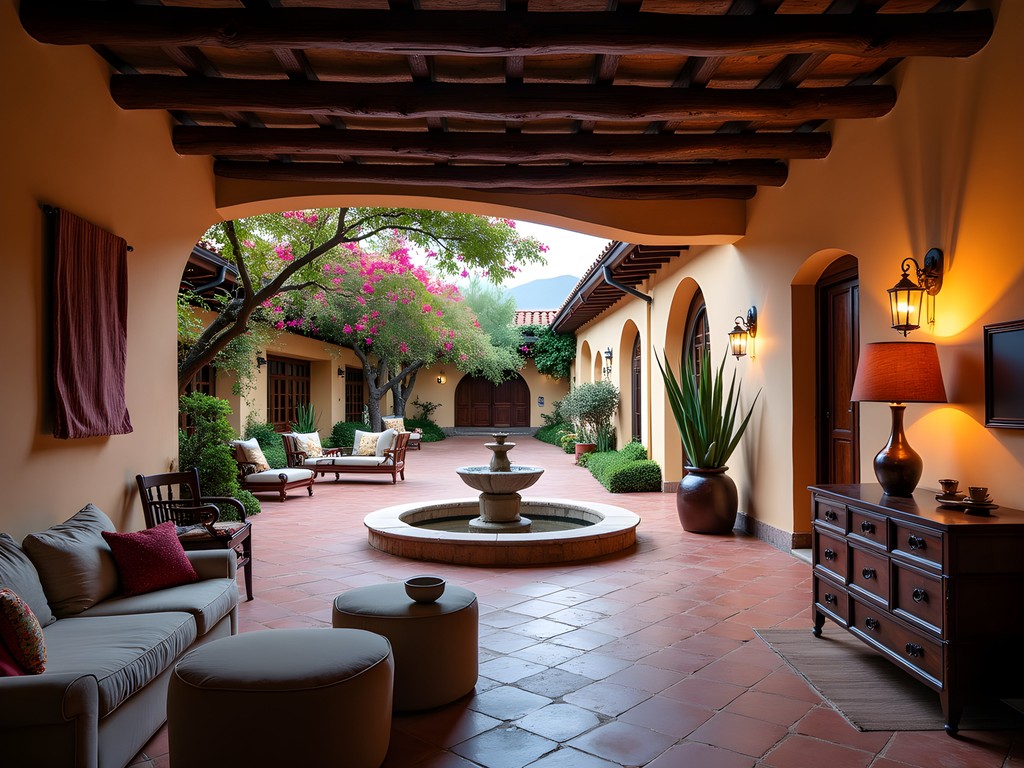
💡 Pro Tips
- Request rooms in original hacienda buildings rather than newer annexes for authentic architectural details
- Many haciendas offer private historical tours with staff historians; these are worth the additional cost
- Book dinner in historic wine cellars or former chapel spaces for a uniquely atmospheric experience
Boutique Properties in Indigenous Communities
Some of the Sacred Valley's most meaningful accommodation experiences can be found in small-scale boutique properties developed in partnership with indigenous communities. These establishments represent a significant evolution in community-based tourism, moving beyond simplistic models of cultural tourism toward sophisticated enterprises that center indigenous agency and knowledge systems.
During my fieldwork documenting climate adaptation strategies, I spent several nights at Amaru Valle, a collection of six luxury casitas co-owned and operated by a Quechua community cooperative. This property exemplifies the new paradigm of indigenous hospitality, where traditional knowledge informs every aspect of the guest experience. The architectural design incorporates pre-Columbian building techniques optimized for thermal regulation, while interiors showcase contemporary interpretations of traditional aesthetics created by local artists.
What distinguishes these community-partnered properties is their integration of indigenous cosmology and ecological knowledge into operational practices. At Willka T'ika, where I conducted interviews with local farmers about changing precipitation patterns, I observed how traditional agricultural calendars inform their permaculture gardens, creating resilient food systems that adapt to increasingly unpredictable climate conditions.
These properties often provide the most authentic culinary experiences in the region. Rather than offering generic interpretations of Peruvian cuisine, their menus celebrate hyperlocal ingredients and traditional preparation methods that have sustained Andean communities for millennia. During my stay at Nunu Andean Lodge, I participated in a pachamanca feast—an ancient earth-oven cooking technique that connects dining experiences to the sacred landscape.
For capturing the extraordinary cultural exchanges these properties facilitate, I relied on my travel journal to document conversations with community members about their perspectives on sustainable tourism development.

💡 Pro Tips
- Request community-led experiences that extend beyond performative demonstrations to meaningful cultural exchange
- Many indigenous-operated properties have specific protocols for photography; always ask permission before taking pictures
- Book well in advance as these smaller properties have limited capacity and high demand
Strategic Locations for Sacred Valley Exploration
The Sacred Valley stretches approximately 60 kilometers from Pisac to Ollantaytambo, with each section offering distinct advantages as a base for exploration. Your ideal location depends largely on your research interests—or in the case of most visitors, your sightseeing priorities and preferred pace of travel.
During my fieldwork studying agricultural adaptation, I strategically divided my accommodation between three locations to efficiently access different research sites. This approach is equally valuable for couples seeking to maximize their experience of the region's cultural and natural diversity.
The eastern valley near Pisac provides excellent access to some of the region's most impressive Inca ruins and vibrant traditional markets. Properties in this area, such as Lamay Lodge, offer a quieter alternative to the more developed central valley while still providing convenient access to major archaeological sites. This location is ideal for those interested in indigenous craft traditions, as many surrounding communities maintain specialized artistic practices.
The central valley around Urubamba serves as the region's commercial hub and offers the highest concentration of luxury properties. Staying in this area provides convenient access to the full length of the valley, making it ideal for those who prefer a single accommodation base. The Tambo del Inka Resort, where I conducted several stakeholder interviews, exemplifies the sophisticated options available in this area, with its exceptional spa facilities providing welcome relaxation after days of fieldwork—or in your case, sightseeing.
The western valley near Ollantaytambo offers the most convenient access to Machu Picchu via the train station located in town. Properties like El Albergue provide the strategic advantage of being walking distance to the station, eliminating the need for pre-dawn transfers on your Machu Picchu day. This area also features some of the valley's most impressive living archaeological sites, where ancient agricultural practices continue alongside contemporary innovations.
For navigating between accommodations and research sites, I found my travel backpack perfectly suited to the Sacred Valley's variable conditions, with sufficient capacity for research equipment and layers for changing weather.
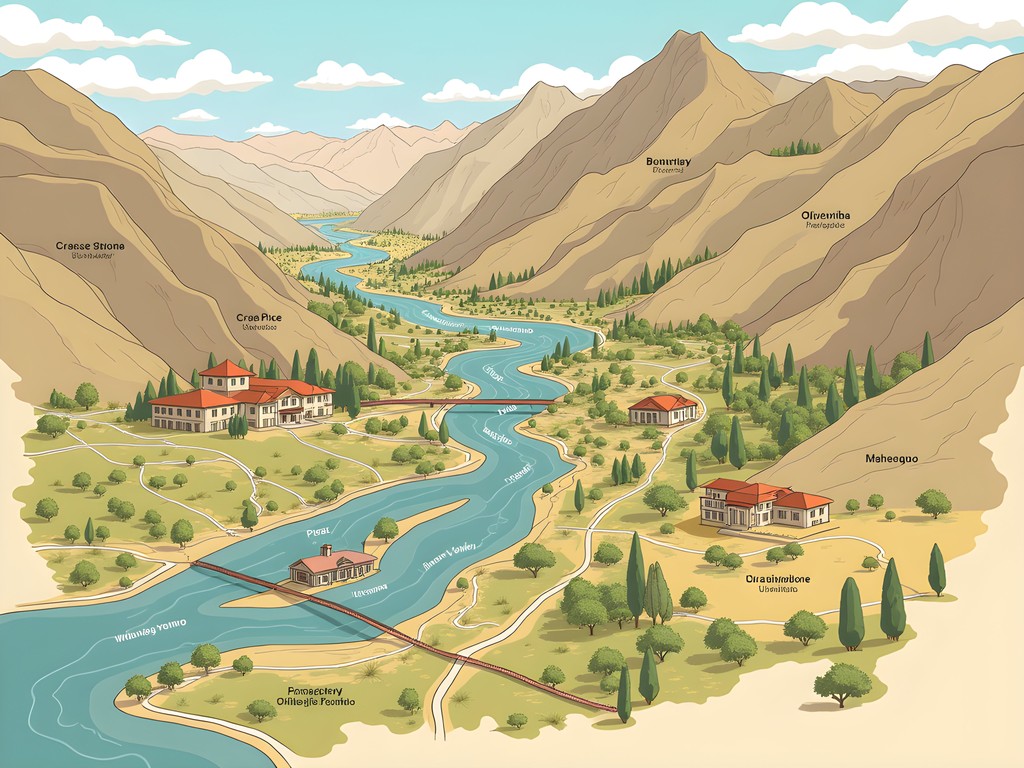
💡 Pro Tips
- Consider splitting your stay between different sections of the valley to minimize driving time to major sites
- Properties near Ollantaytambo offer earliest access to morning trains to Machu Picchu
- Accommodations in the central valley provide the most convenient access to quality restaurants and services
Altitude Considerations and Wellness Amenities
The Sacred Valley's elevation—ranging from 2,400 to 3,000 meters above sea level—presents physiological challenges that even the most experienced mountain travelers must address thoughtfully. Having conducted research in high-altitude environments worldwide, I've developed protocols for managing altitude adaptation that apply equally well to leisure travelers seeking to maximize their comfort and enjoyment.
The most strategic approach for couples planning a luxury Sacred Valley experience is to begin your journey in the valley rather than in Cusco. At approximately 1,000 meters lower than Cusco's 3,400-meter elevation, the Sacred Valley provides a gentler introduction to altitude, allowing your cardiovascular system to adapt gradually before ascending to higher elevations.
During my recent research expedition, I documented significant variations in how different luxury properties address altitude-related wellness. The most sophisticated programs, such as those at Inkaterra Hacienda Urubamba, integrate traditional Andean botanical knowledge with contemporary medical approaches. Their altitude adaptation program includes oxygen-enriched rooms, coca leaf tea service (the region's traditional remedy), and on-call medical consultation.
Several properties have developed exceptional spa facilities specifically designed to address altitude-related symptoms. Explora Valle Sagrado's wellness center offers specialized treatments incorporating local botanical ingredients known for their efficacy in improving circulation and oxygenation—scientific applications of indigenous knowledge systems I've documented throughout the Andes.
For couples seeking the ultimate wellness experience, Sol y Luna's comprehensive spa program merges Andean healing traditions with contemporary therapeutic approaches. Their altitude recovery treatment, which I experienced after a particularly strenuous day of fieldwork at 3,800 meters, combines oxygen therapy with a massage utilizing local herbal preparations traditionally used by Andean communities to address soroche (altitude sickness).
Regardless of your chosen accommodation, I recommend bringing a pulse oximeter to monitor your blood oxygen levels during your first days at altitude—a practice I maintain during all my high-elevation research expeditions.

💡 Pro Tips
- Request oxygen-enriched rooms when available, particularly if you have any respiratory or cardiovascular conditions
- Schedule spa treatments for your first day in the region to support altitude adaptation
- Most luxury properties offer complimentary coca tea; consume regularly but be aware it may appear on drug tests
Final Thoughts
The Sacred Valley offers accommodations that transcend mere luxury to become portals for understanding Peru's extraordinary cultural and ecological complexity. Whether you choose an indigenous-operated boutique lodge, a meticulously restored hacienda, or a sustainability-focused eco-resort, your accommodation becomes an integral part of your Sacred Valley narrative rather than simply a place to rest. As an anthropologist who has studied mountain communities across five continents, I find the Sacred Valley's hospitality landscape particularly compelling for its thoughtful integration of indigenous knowledge systems, environmental stewardship, and authentic luxury. The most memorable stays are those that facilitate meaningful connections—to the landscape, to local communities, and to the ancient wisdom that continues to shape this extraordinary region. I encourage you to select accommodations not merely for their amenities but for their commitment to honoring the Sacred Valley's living heritage while supporting its sustainable future.
✨ Key Takeaways
- Begin your Sacred Valley journey at lower elevations before ascending to Cusco to minimize altitude-related discomfort
- Indigenous community-partnered properties often provide the most authentic cultural experiences and direct community benefits
- Strategic positioning in different sections of the valley maximizes exploration efficiency and minimizes transit time
📋 Practical Information
Best Time to Visit
May through September (dry season)
Budget Estimate
$400-800 per night for luxury accommodations
Recommended Duration
5-7 nights in Sacred Valley (part of 2-week Peru itinerary)
Difficulty Level
Easy To Moderate (With Appropriate Altitude Acclimatization)
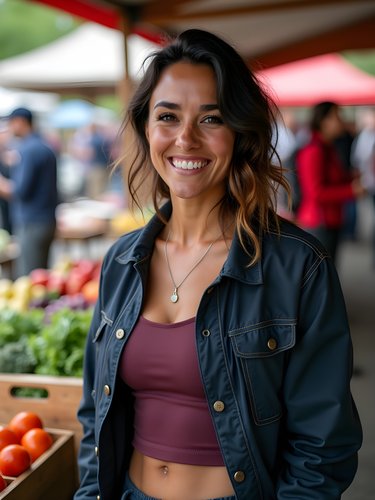
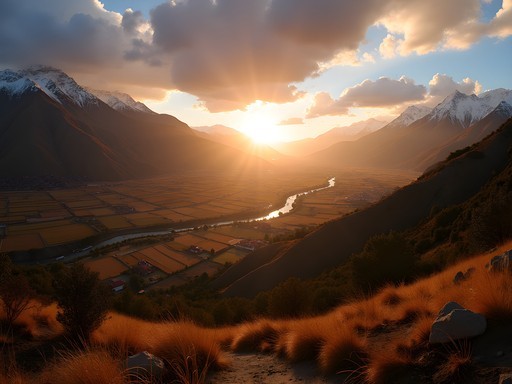
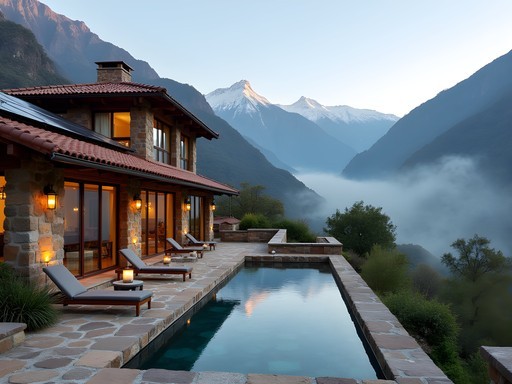
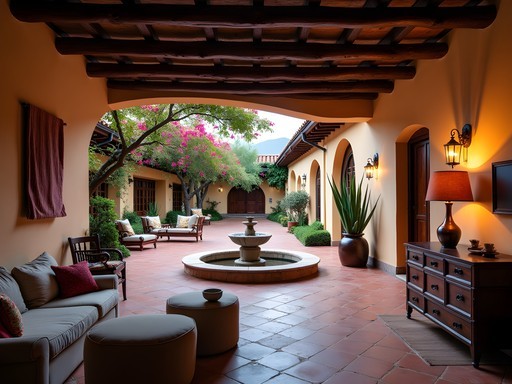
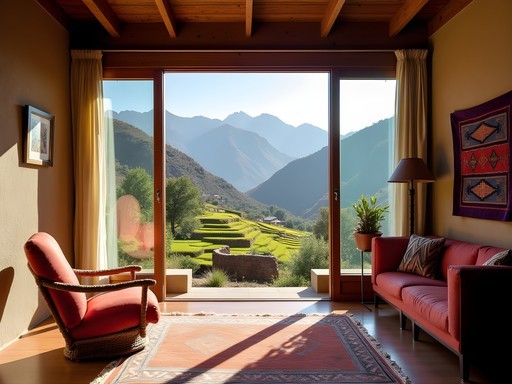
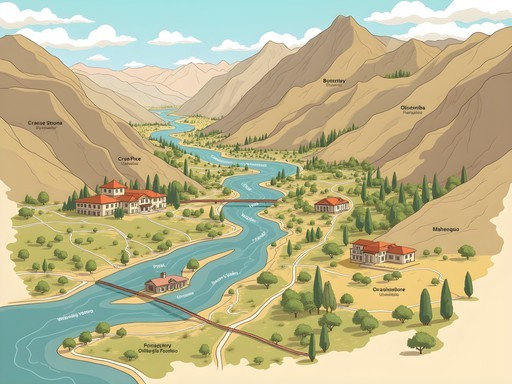
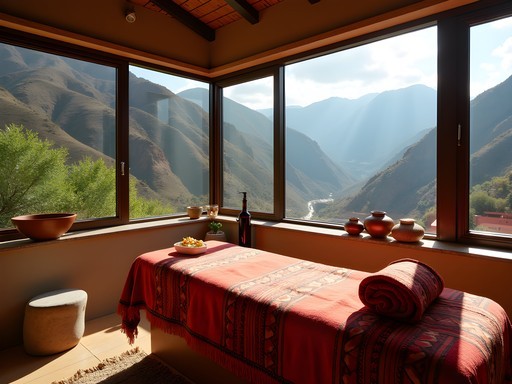


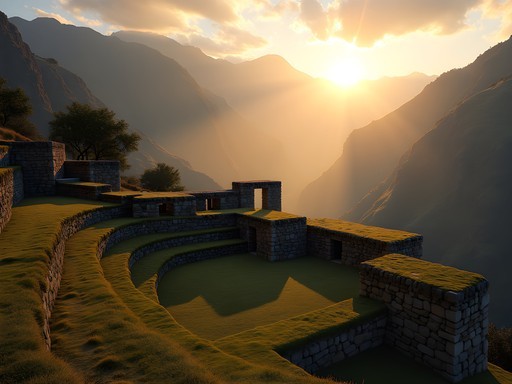

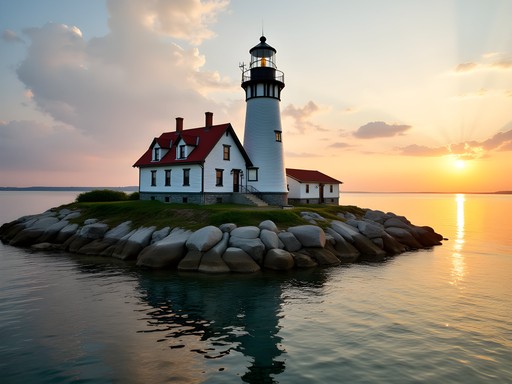





Comments
sunsetmaster
Love how these places blend luxury and sustainability!
springvibes
This is such perfect timing! I'm heading to Peru in September and was torn between staying in Cusco the whole time or venturing into the Sacred Valley. After reading this, definitely going to split my time. Has anyone stayed at one of the historic haciendas? Wondering if they're worth the splurge for a special occasion.
sunsetmaster
Did a hacienda stay for our anniversary last year. 100% worth it!
dreamguide
Just got back from Peru and stayed at one of these eco-lodges! The stargazing was INCREDIBLE! Make sure to pack layers though - it gets cold at night even when days are warm. I used my travel binoculars for both stargazing and spotting Andean condors during the day. Worth every penny!
sunsetmate
Those photos are stunning! Added to my bucket list!
Douglas Bradley
Excellent breakdown of the accommodation landscape, Haley. I spent three weeks in the Sacred Valley last year researching the intersection of tourism and indigenous cultural preservation. The boutique properties in indigenous communities you mentioned are truly transformative experiences. I stayed at a community-run lodge near Pisac where profits fund local education initiatives. One observation I'd add: the microclimates you mentioned also affect which properties are ideal during different seasons. The higher elevation eco-lodges near Chinchero can get quite chilly May-August, while the lower valley haciendas remain pleasant year-round.
springvibes
Douglas, would you mind sharing the name of that community-run lodge near Pisac? Sounds exactly like what I'm looking for on my trip.
Douglas Bradley
Sure thing! It's called Parwa Community Guesthouse. Basic but comfortable accommodations, amazing home-cooked meals, and the cultural exchange is priceless. They have limited rooms though, so book well in advance.
sunnyseeker1670
OMG I'm going to Peru next month!!! So excited! Those haciendas look AMAZING! Did you find the altitude to be a problem? First-timer here! 😍✈️
citylife
Great post! Did you have a favorite eco-lodge that really stood out among the rest? Planning a trip for next summer and sustainability is important to me.
Haley Thompson
Thanks for asking! I'd say Inkaterra Hacienda Urubamba had the most comprehensive sustainability program while still offering luxury. Their organic farm-to-table concept is incredible!
citylife
Perfect, thanks! Adding it to my list.
freelife
Just got back from Peru last month and we split our time between a hacienda in Urubamba and a small ecolodge near Pisac. The contrast was fascinating! The hacienda had this amazing historical feel with colonial architecture but modern amenities. The ecolodge was all about sustainability - solar power, farm-to-table food, and natural building materials. If you can swing it, I'd recommend experiencing both styles during your trip. Also, the Sacred Valley is HUGE - it takes longer than you'd think to get between towns, so plan accordingly. The microclimates thing mentioned in the article is so true - packed completely different clothes for different areas!
nomadperson
First time going to Peru in August. Is it better to stay in Cusco or in one of these Sacred Valley spots? I'm worried about altitude sickness!
moonlover
The Sacred Valley is lower than Cusco, so it's actually better for adjusting to the altitude! I'd recommend staying in the valley first for 2-3 days before heading to Cusco.
nomadperson
Oh that's super helpful, thanks! Any specific town you'd recommend?
moonlover
Urubamba is pretty central to everything and has options for all budgets!
Frank Garcia
Great breakdown of accommodation options, Haley! As someone who's backpacked through Peru three times now, I'd add that there are some fantastic community-based tourism initiatives in smaller villages around Ollantaytambo that offer homestays. They're super affordable (around $15-25/night) and provide a much more intimate cultural experience. The families cook traditional meals and sometimes even teach you about local farming practices. I used my travel guide to find several of these places that weren't listed online. The one downside is that hot water can be hit or miss, so pack layers for sleeping if you go this route!
nomadperson
Frank - do these homestays need to be booked in advance? Or can you just show up in the villages?
Frank Garcia
In my experience, showing up works in low season, but during high season (Jun-Aug) it's better to book at least a few days ahead. The tourism office in Cusco can help with contacts!
Venture X
Premium card with 2X miles, $300 travel credit, Priority Pass